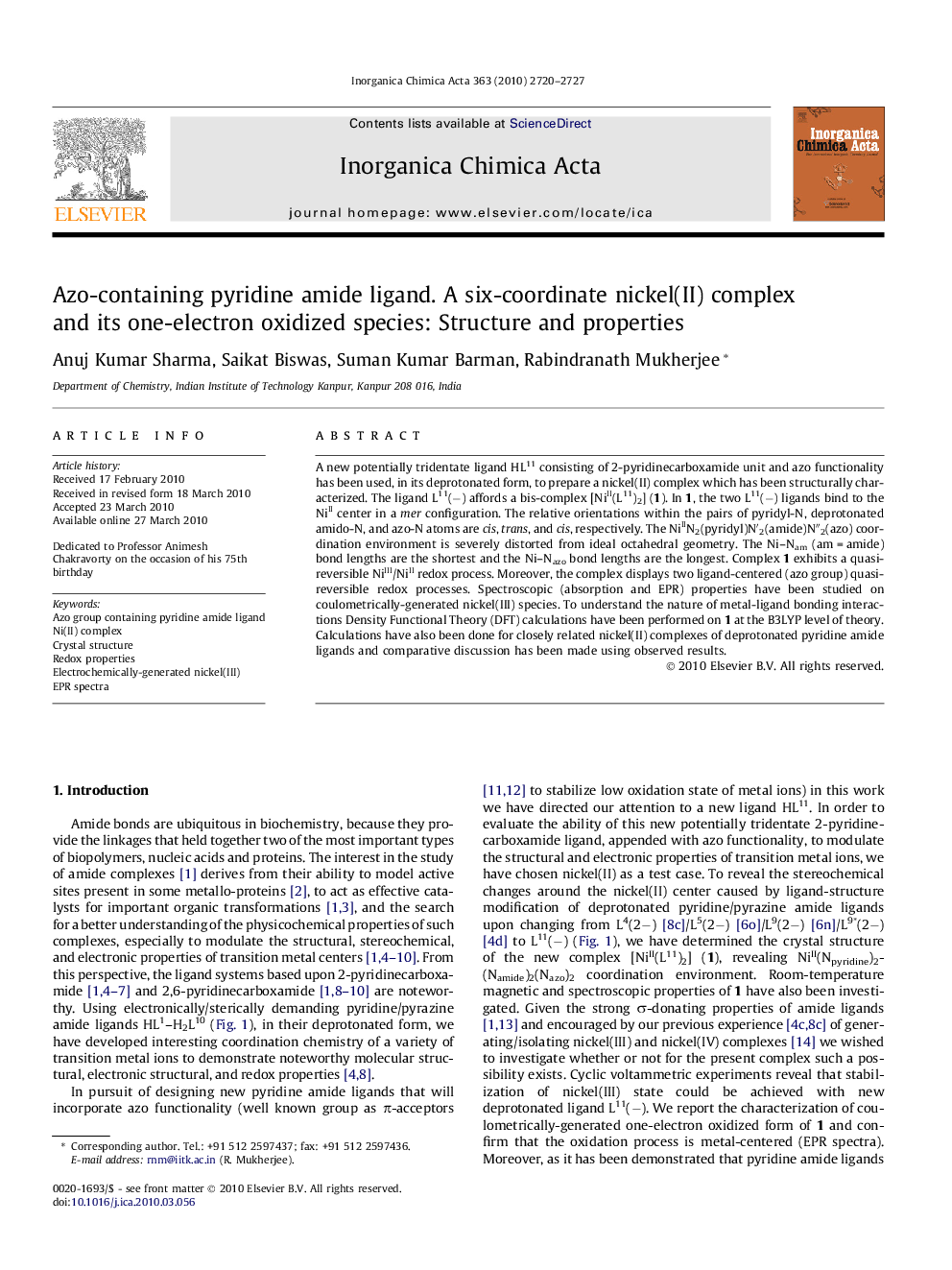| Article ID | Journal | Published Year | Pages | File Type |
|---|---|---|---|---|
| 1306879 | Inorganica Chimica Acta | 2010 | 8 Pages |
A new potentially tridentate ligand HL11 consisting of 2-pyridinecarboxamide unit and azo functionality has been used, in its deprotonated form, to prepare a nickel(II) complex which has been structurally characterized. The ligand L11(−) affords a bis-complex [NiII(L11)2] (1). In 1, the two L11(−) ligands bind to the NiII center in a mer configuration. The relative orientations within the pairs of pyridyl-N, deprotonated amido-N, and azo-N atoms are cis, trans, and cis, respectively. The NiIIN2(pyridyl)N′2(amide)N″2(azo) coordination environment is severely distorted from ideal octahedral geometry. The Ni–Nam (am = amide) bond lengths are the shortest and the Ni–Nazo bond lengths are the longest. Complex 1 exhibits a quasireversible NiIII/NiII redox process. Moreover, the complex displays two ligand-centered (azo group) quasireversible redox processes. Spectroscopic (absorption and EPR) properties have been studied on coulometrically-generated nickel(III) species. To understand the nature of metal-ligand bonding interactions Density Functional Theory (DFT) calculations have been performed on 1 at the B3LYP level of theory. Calculations have also been done for closely related nickel(II) complexes of deprotonated pyridine amide ligands and comparative discussion has been made using observed results.
Graphical abstractOne-electron oxidized form of the title complex, a nickel(III) complex, has been supported by EPR spectral analysis. DFT calculations of the nickel(II) complex and closely related complexes have revealed the metal–ligand bonding characteristics of this class of pyridine amide complexes of nickel(II) and provided a rationale for the observed trend in the NiIII/NiII redox potential values.Figure optionsDownload full-size imageDownload as PowerPoint slide
